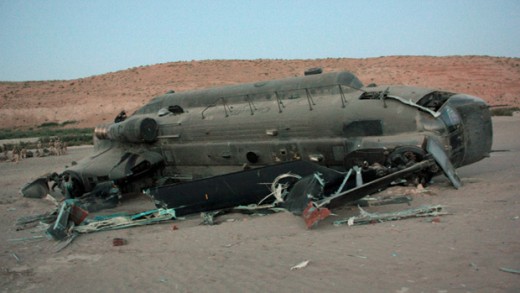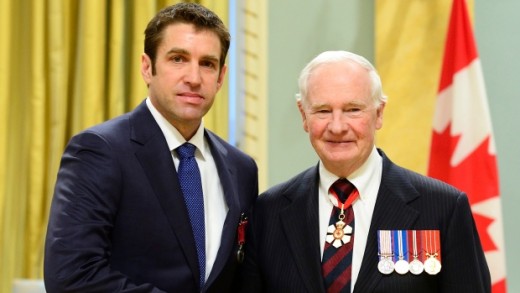 Scroll Down to see all of this week’s updates
Scroll Down to see all of this week’s updates
COPA Urges Action On Airport Regs
 The Canadian Owners and Pilots Association is asking all Canadian pilots to let Transport Canada know that its Notice of Proposed Amendment (NPA) to aerodrome regulations will “place undue hardship on small aerodrome and will significantly impact recreational aviation in general, private owners and operators, in particular.”
The Canadian Owners and Pilots Association is asking all Canadian pilots to let Transport Canada know that its Notice of Proposed Amendment (NPA) to aerodrome regulations will “place undue hardship on small aerodrome and will significantly impact recreational aviation in general, private owners and operators, in particular.”
COPA is asking as many interested parties as possible to send comments to Transport Canada regarding the amendments, which it says will jeopardize small airports, seaplane bases and heliports all over the country with onerous new public consultation requirements.
COPA has written a sample letter and a list of bullet points and is urging pilots and other aviation stakeholders to use them as a basis for their own comments to TC. The letters are available as downloadable Word documents here. The deadline is April 8 and the email address to send the comments is carrac@tc.gc.ca
The NPA mandates a costly and lengthy public consultation process for the construction or expansion of any aerodrome within four kilometres of a “built-up area” and within 30 nautical miles of an existing aerodrome. It also requires environmental reviews in some circumstances.
COPA also says the requirements to trigger public consultation are vague or arbitrary and many lack relevance to the stated goals of the NPA. It notes the current proposal would affect virtually every attempt to build or expand an aerodrome anywhere in Southern Ontario.
Another potentially expensive change in the NPA is a shift in building standards. Under the new rules buildings would have to conform to local building codes rather than the National Building Code as the rules now state.
Crash Airplane ‘Came Apart in the Air’

A Piper Lance flown by a Sudbury lawyer disintegrated in midair, likely due to extreme aerodynamic forces, before it crashed in the Northern Ontario wilderness according to a Transportation Safety Board investigator.
Leo Arseneau. 64, his wife Mary Lou, 65, and a caregiver, who has not been identified, died March 17 when the aircraft apparently dove from 10,000 feet to the ground near the mouth of the French and Pickerel Rivers about 100 km. south of Sudbury.
“It’s actually three accident sites — there’s the main site, with the engine, part of one of the wings and most of the tail section is located there, impacted on a rock face right beside the water,” said Don Enns of the TSB. “Then about a quarter-mile away there’s the main section of the left-hand wing.” The right wing was found about a mile away.
Enns said Arseneau called air traffic control shortly after he took off from Sudbury bound for Winston-Salem, North Carolina and said he was turning back. He was from 10,000 feet to 5,000 feet but continued its “extremely” rapid descent and contact was lost.
“The question there is how and why,” he said. “We know it came apart in the air; we don’t know why yet. Part of figuring out why is determining exactly what the sequence of failure was.”
Enns said two of the occupants were ejected from the aircraft before it hit the ground.
RCAF Pilots Blamed in Chinook Crash

Pilots of an RCAF Chinook helicopter were blamed for the loss of their $45 million aircraft in a landing accident that also injured nine soldiers in Afghanistan in May of 2011.
“The investigation concluded that the use of inadequate landing procedures in a degraded visual environment resulted in the helicopter landing with right drift, causing it to dynamically roll over,” said an RCAF report.
The helicopter was carrying 31 people when it tried to land on a dry riverbed in moonlight. The dust plume caused by the downwash obliterated the landing site and it drifted to the right as it landed, leading to the dynamic rollover.
Most of the occupants were wearing full combat gear and were not wearing seatbelts and the injuries resulted from them tumbling about the cabin and being hit by flying objects.
The said flying procedures were not clear and there was no decision height established for dusty landings, the report said.
Rescue Pilot Gets Medal of Bravery

Helicopter pilot James Kitchen was awarded the Medal of Bravery by Governor General David Johnston on Monday.
Kitchen and his colleague Will Ward were in Iqaluit on March 13, 2011 when they heard that a hunter had fallen through the ice about 200 kilometres from town.
For Kitchen and Ward, it was all in a day’s work. “All I really did is go to work,” Kitchen told the CBC.
The two hopped in their helicopter and found the hunter. “While Mr. Kitchen skilfully kept his helicopter hovering over the water, Mr. Ward reached down to rescue the two victims, pulling them into the helicopter one after the other, all while battling the unforgiving Arctic winds,” said a statement from Rideau Hall. One man was floating on his snowmobile and some empty gas cans while his hunting partner was on solid ice.
But while the vice regal arm of the government saw heros, Kitchen and Ward said anyone else would have done the same in their circumstances.
“When you fly in the bush and remote places you get called out quite a bit to help local authorities and search and rescue to give people a hand when they need it,” says Kitchen.
